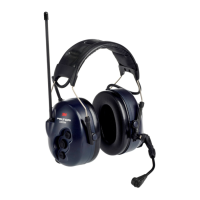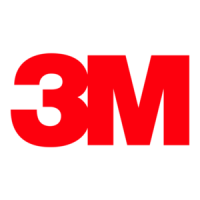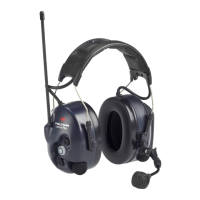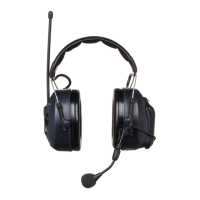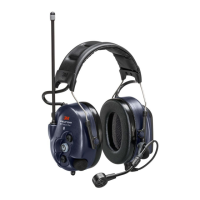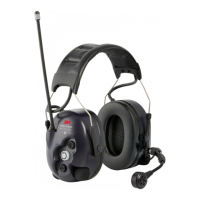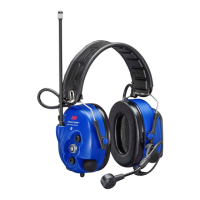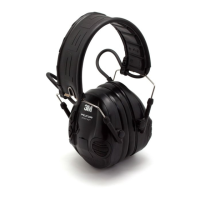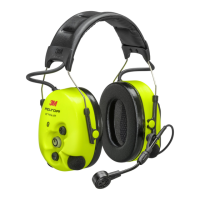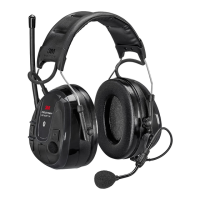Do you have a question about the 3M PELTOR LiteCom and is the answer not in the manual?
| Communication | Two-way radio communication |
|---|---|
| Noise Reduction Rating (NRR) | 25 dB |
| Battery Type | Rechargeable lithium-ion |
| Frequency Range | PMR 446 MHz |
| Type | Wireless Headset |
| Microphone | Noise canceling |
| Number of Channels | 8 |
| Compatibility | Compatible with other PMR446 radios |
| Standards | EN 352-1 |
Details the components of the Headband variant of the LiteCom headset.
Details the components of the Carrier attachment variant of the LiteCom headset.
Details the components of the Neckband variant of the LiteCom headset.
Attenuation data for the Headband variant according to EN 352-1:2020 standard.
Attenuation data for the Neckband variant according to EN 352-1:2020 standard.
Attenuation data for the Carrier attachment variant according to EN 352-3:2020 standard.
Details the standard for external wireless safety audio input.
Specifies input signal levels for audio input.
Specifies sound output levels for audio input.
Defines criterion input signal level for audio input.
Specifies SPL for maximum input signal.
Time equivalent to 82 dB(A) over 8 hours for audio input.
Explanation of the carrier attachment table.
Column header for compatible carrier device manufacturer.
Column header for compatible carrier device model.
Column header for compatible carrier device attachment type.
Column header for compatible carrier device head size.
Table listing radio frequencies for the headset.
Table listing CTCSS frequencies for sub-channel selection.
Describes the intended purpose and use of the LiteCom headset.
Defines the term 'carrier' in the context of head and face protection.
Highlights critical safety information to read before use.
Provides crucial warnings regarding hazardous noise and potential injury.
Lists safety statements related to EN 352 standards for hearing protection.
Declares compliance with EU directives and regulations for CE marking.
Declares compliance with UKCA marking regulations and PPE regulations.
Provides information on finding the Declaration of Conformity for EU and GB.
Explains EU recommendations for personal fit testing of hearing protectors.
Explains standard table references for EN 352-1 and EN 352-3.
Explains the carrier attachment table and fitting compatibility.
Lists the different variants of the LiteCom headset.
General points for preparing the product for operation.
Instructions for safely removing and installing batteries.
General guidance on inspecting the hearing protector before use.
Instructions for fitting the headband version of the headset.
Instructions for fitting the neckband version of the headset.
Instructions for fitting the carrier attachment version of the headset.
Guidance on positioning the microphone for optimal performance.
Instructions on how to turn the headset on and off.
Explanation of the Push-To-Talk (PTT) function.
Instructions for adjusting the radio volume.
Instructions for selecting radio channels.
Explanation and adjustment of the VOX function for hands-free transmission.
Recommendation for product replacement and factors affecting lifetime.
Guidance on cleaning the headset and maintaining its condition.
Step-by-step guide for removing and replacing ear cushions.
Instructions for replacing the helmet attachment plate.
List of available spare parts and accessories with article numbers.
Recommendations for storing the product to maintain its condition.
Explanation of various symbols found on the product and packaging.
Details the warranty terms and conditions for the product.
Outlines limitations on liability for damages related to the product.
States that modifications to the device are not permitted.
